Natural ponds come and go. They fill up when it’s wet and empty when it’s dry. Pond wildlife has learnt to live in these changeable worlds in remarkable ways.
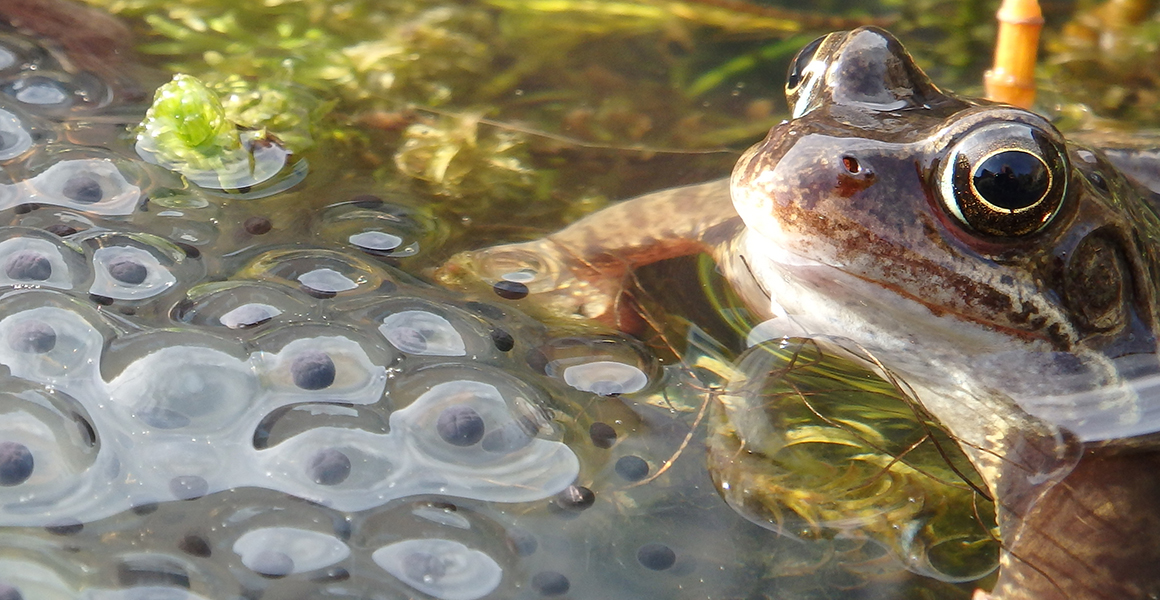
A common frog with its eggs. Frogs and toads need a pond to breed. If a pond dries out or is filled in, these amphibians are at risk if they don’t find a new pond. © Lesley Andrew/ Shutterstock
Life can thrive in temporary ponds, human-made ponds and even ghost ponds, places where life remembers a pond long disappeared.
Let’s explore the bust and boom of pond life.
Wildlife quickly moves into a pond
Ponds can form everywhere. From a small puddle to a bend of a river stretching out in heavy rain. When a space fills up with water, nature quickly moves in.
The first to move into a pond are usually aquatic plants such as water starwort, then insects such as water boatmen, pond skaters, whirligig beetles and great diving beetles. Other creatures might then arrive, such as leeches, frogs, dragonflies and ducks.
For some of this pond life, a temporary home suits their needs. Frogs and newts find temporary ponds a welcome place to breed and thrive without their eggs being eaten by more established life, such as predatory fish.
UK Biodiversity Training Manager at the Museum, Steph Holt, says, “a network of temporary ponds can be very important for the survival of some freshwater species, and some can only thrive in a habitat with multiple temporary ponds”.
Just because a pond is temporary, this doesn’t mean it’s not old. A temporary pond might fill and empty over time. In the UK, some glacial ponds or depressions that temporarily fill with water at certain times are thought to be more than 8,000 years old.
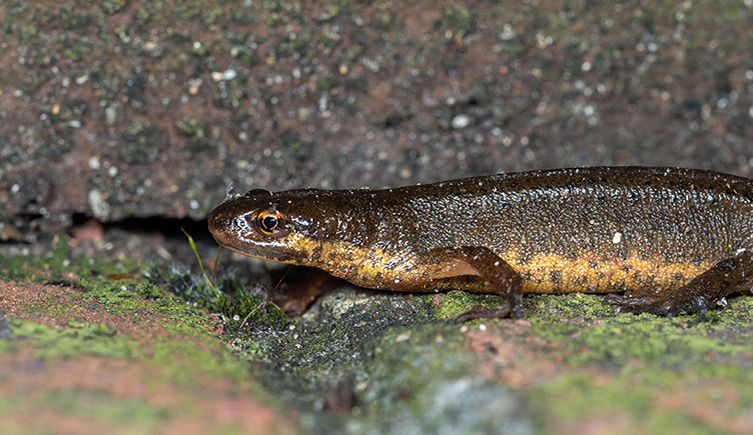
A palmate newt on the move. © Stephan Morris/ Shutterstock
How does wildlife find a new pond?
To make the most of a temporary pond, wildlife must be able to travel between one place and the next – but just how do animals find their way to a new home?
Amphibians can explore far and wide before returning to their breeding pond each year in spring. The common frog can travel up to five hundred metres from its breeding pond. The common toad might travel further, roaming up to five kilometres. Other amphibians, such as the tiny palmate newt travel as far as 19 kilometres to occupy a new pond.
Using their wings, it’s easier for insects such as the great diving beetle, mayflies and dragonflies to find a new place to live. A caddisfly is known to fly as far as five kilometres to a new location.
The smaller inhabitants of a pond, such as water fleas and fairy shrimp, dry out and go dormant when a pond dries up. They can then rehydrate and clone themselves to reproduce quickly when the water returns.
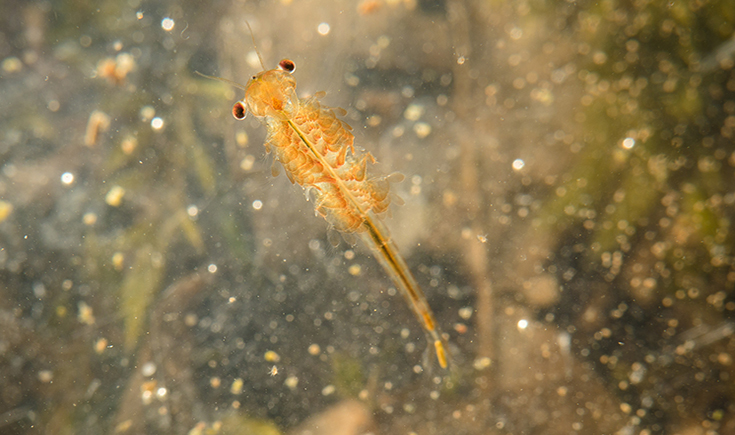
Fairy shrimp rely on their pond drying up to complete their life cycle. Fairy shrimp eggs lie in the dry soils of summer, ready for the rain in autumn when they hatch within two days of their pond filling with water. © photoJS/ Shutterstock
The ponds in our gardens
We’ve built new ponds in our gardens as part of the Urban Nature Project. During their construction, a series of temporary ponds housed our pond life. There was even a ‘newt spa’, a smaller temporary pond for amphibians to enjoy.
Just months after the temporary ponds were built, there were signs of life. You could see pond snails, water lice, leeches and flatworms making the most of their temporary home.
Much of this pond life came from the old ponds in sediment, but many of the insects would have found the new ponds by flying the short distance to their new home.
We’ve also sampled our ponds for eDNA, which will give us a very good idea of what’s living there.
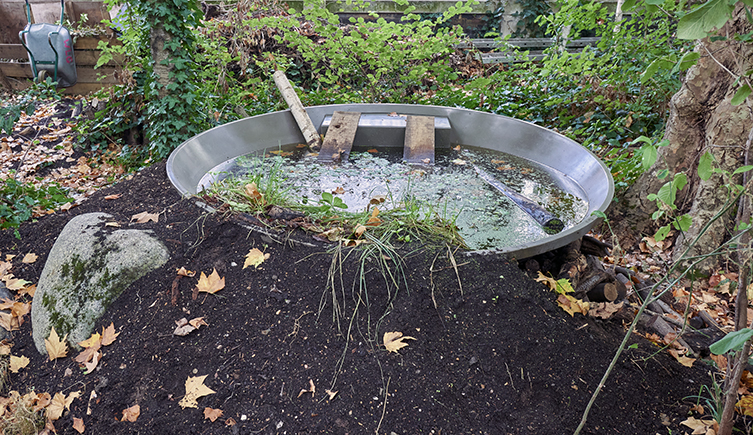
We created a ‘newt spa’ as a place for newts to call home while we made new ponds for our gardens.
Where do frogs and newts go when they are not in a pond?
Amphibians, such as frogs, toads and newts, use ponds mainly for breeding. They spend the rest of their time hunting in damp, earthy places.
Amphibian eggs and tadpoles can only survive in water, but outside of the breeding season, or if their pond dries up, amphibians can happily forage, hunt and shelter on land.
“UK amphibian species will feed on a wide range of invertebrates and provided their skin remains damp, they can be found hunting in leaf litter and under hedges, and sheltering under logs, rocks and even plant pots,” says Steph.
Over winter, UK amphibians hibernate. They require earthy habitats to do this. Called hibernacula, these underground chambers will remain damp but not flooded and protect the amphibians from freezing. Large piles of logs, stones or even leaves are perfect for this.
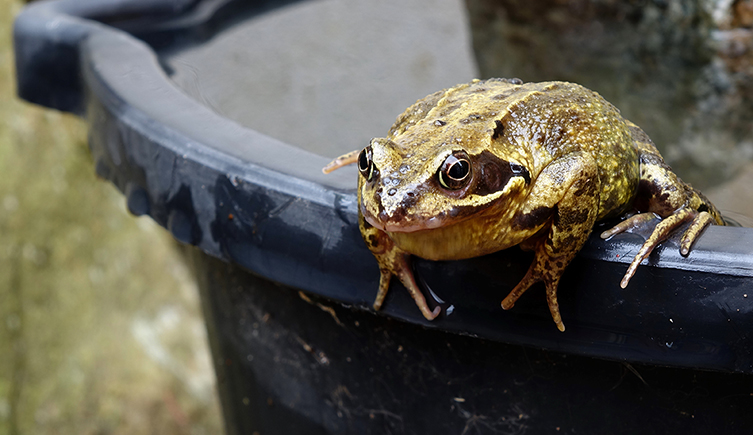
Common toads don’t spend too much of their time in a pond – they only return to their pond to breed. © Martin Gillman/ Shutterstock
Ponds in cities and towns encourage biodiversity
Ponds in cities and towns are important homes for many species needing conservation, such as the common frog.
Urban ponds tend to have fewer species living in them than rural ponds, unless they’ve been planted with a diverse range of plants. Urban ponds also tend to include more non-native species. But their value in increasing biodiversity is still important. By bringing more invertebrate life into urban spaces, ponds provide an important source of food to other species such as bats and birds, as well as, of course, an important source of drinking water for wildlife.
A network of ponds in an urban environment is a great way to harbour and nourish biodiversity.
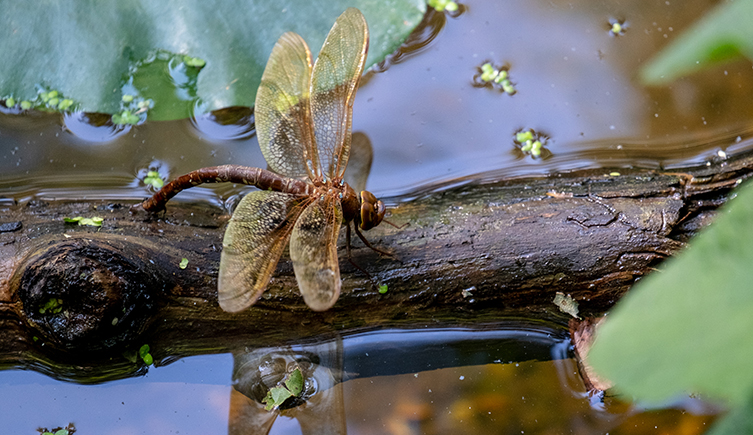
A brown hawker dragonfly rests on a log. © Robyn-May/ Shutterstock
Ghost ponds
Pond life has a long memory. In places where a pond existed – even decades earlier – plant seeds lie dormant in the soil, ready for a time when water returns.
These places are called ghost ponds, and they exist in spots where ponds have been filled in. This can happen as the landscape is developed and changed, often to make way for agriculture. Today, there are less than a quarter of the ponds that were in the UK at the start of the twentieth century.
Restoring these ponds, as well as making new ponds and temporary ponds is vital for giving wildlife places to live and thrive.

British wildlife
Find out about the plants and animals that make the UK home.
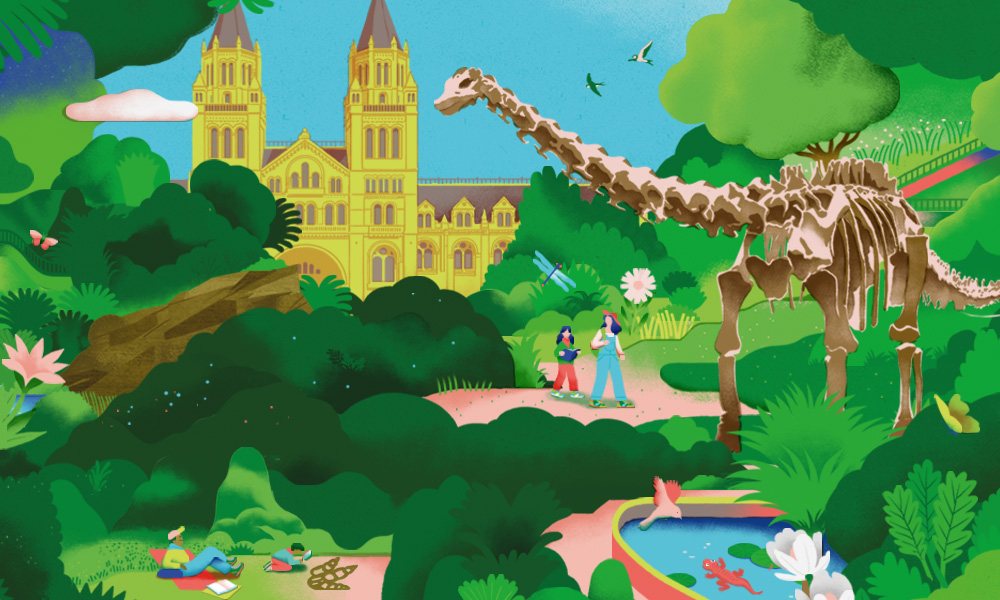
Visit our new gardens
Our gardens follow the story of how life on Earth has changed over time, from the days of the dinosaurs through to today.
Open daily




Don't miss a thing
Receive email updates about our news, science, exhibitions, events, products, services and fundraising activities. We may occasionally include third-party content from our corporate partners and other museums. We will not share your personal details with these third parties. You must be over the age of 13. Privacy notice.
Follow us on social media